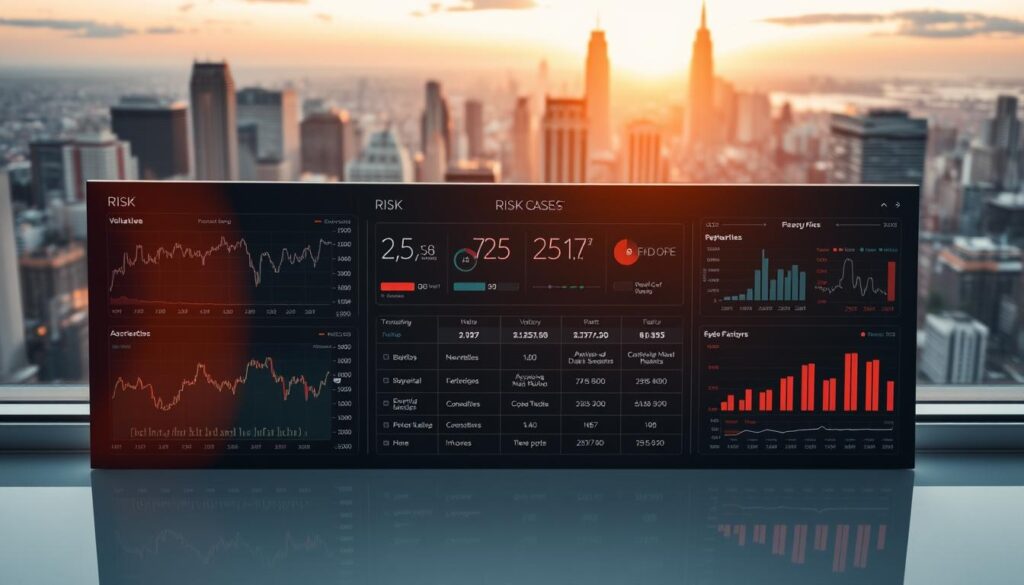Imagine navigating a busy intersection without traffic signals. That’s what trading feels like without tracking critical economic updates. An interactive tool acts as a financial GPS, revealing when news might shake currency values across global markets.
This resource covers real-time data from 40+ nations. It shows past results, current forecasts, and how events could sway prices. Professionals use it to spot volatility before major announcements—like inflation reports or central bank decisions—hit the wires.
Updated every minute, the tool eliminates guesswork. Traders see whether jobs data beat expectations or if GDP figures missed targets. This helps them decide when to enter trades or tighten risk controls.
Strategic planning becomes possible. Instead of reacting to surprises, users analyze patterns. They might avoid trading during high-impact events or position themselves to ride predictable trends. Historical context turns raw numbers into actionable insights.
By aligning decisions with scheduled releases, trading transforms from chaotic to calculated. It’s not just about knowing the news—it’s about knowing when the news arrives.
Understanding the Forex Calendar
Like a financial roadmap, this tool charts critical moments where currencies might surge or stumble. It transforms scattered data into a clear timeline, helping traders anticipate market-moving announcements.
Defining Its Core Function
The system organizes global financial updates into actionable patterns. Governments and institutions follow predictable schedules:
- Employment numbers typically surface every first Friday
- Inflation rates emerge around mid-month
- Quarterly GDP reports reveal economic health
Central banks add rhythm to this cycle, with policy meetings every 6-8 weeks sparking market reactions. This structure turns raw data into strategic opportunities.
Powering Market Movements
Each event carries distinct weight. Consumer price indexes might nudge exchange rates, while interest rate decisions often trigger immediate volatility. Traders assess these tiers of impact:
- High-stakes releases: Potential for 100+ pip swings
- Moderate updates: Gradual price adjustments
- Routine figures: Minimal market effect
By studying historical trends alongside forecasts, users develop sharper analysis skills. They learn which events align with their risk tolerance and trading style.
Key Economic Events Shaping Global Markets

Global economies pulse with scheduled announcements that reshape asset valuations. Savvy professionals monitor these moments to decode potential price shifts and trading opportunities.
Major Releases and Their Market Impacts
Four types of data dominate markets:
- Employment figures: Non-farm payrolls can swing currency pairs by 100+ pips within hours
- Inflation metrics: CPI reports often dictate central bank policy adjustments
- GDP growth rates: Quarterly updates signal national economic health
- Interest rate decisions: Immediate volatility follows central bank statements
US retail sales data acts as an early warning system. When consumers spend more, it hints at economic strength before official growth numbers confirm the trend.
How Fundamental Analysis Enhances Trading Strategies
Historical charts transform raw data into visual stories. Traders compare current events with past patterns to spot deviations. For example, if inflation hits 3% against a 2.5% forecast, currency pairs may react predictably based on previous instances.
Combining real-time updates with decade-long trends helps identify high-probability setups. This approach turns reactive decisions into calculated moves aligned with broader economic cycles.
Optimizing Your Experience with the Forex Calendar Service

Think of these tools as a control panel for navigating market turbulence. Modern platforms let traders tailor their access to data, filtering out distractions while highlighting critical opportunities.
Customizing Filters and Settings for Personalized Access
Users can refine their view using 10+ adjustable parameters. Focus on specific regions, event types, or volatility levels with:
- Country-specific event tracking
- Impact severity filters (high/medium/low)
- Custom date ranges for strategic planning
Saved preferences in your account ensure consistent settings across devices. This eliminates repetitive adjustments, letting traders dive straight into analysis during fast-moving sessions.
Leveraging Browser Notifications for Timely Updates
Enable alerts through your platform to never miss pivotal moments. The system pings users twice:
- 30 minutes before scheduled releases
- Instantly when official data publishes
This automated system frees traders from screen-watching while maintaining precision timing. Integration with trading software allows rapid response—analyze figures and execute strategies within seconds.
Forex Calendar Insights for Strategic Trading

Market movements follow rhythms like a championship sports playbook. Savvy traders sync their strategies with three key global sessions:
Timing and Currency Indicators Explained
The London-New York overlap (1 PM to 5 PM GMT) sees 70% of daily trading volume. Pairs like EUR/USD often swing wildly during these hours. Session flags help identify opportunities:
- Tokyo (USD/JPY): 12 AM – 9 AM GMT
- London (GBP/EUR): 8 AM – 5 PM GMT
- New York (USD/CAD): 1 PM – 10 PM GMT
Currency symbols act as instant visual cues. A eurozone inflation report tagged with € flags signals potential EUR volatility across multiple pairs.
Integrating Economic Forecasts into Your Trading Plan
Markets react strongest when data deviates from forecasts. Consider these steps:
- Compare consensus estimates with actual releases
- Check if results align with central bank policy trends
- Assess liquidity levels during announcement time
Scalpers might trade immediate reactions to jobs data, while position traders use GDP analysis to plan multi-week strategies. Predefined entry rules prevent emotional decisions when volatility spikes.
Risk Management and Market Impact Analysis in Trading

Navigating financial markets without risk tools is like sailing stormy seas without radar. Color-coded indicators and data-driven strategies help traders avoid hidden dangers while capitalizing on volatility.
Understanding Impact Bars and Timing Visuals
Three-colored systems simplify complex market data. Red signals mark high-probability price swings, often tied to interest rate announcements. Orange flags suggest moderate moves during retail sales reports. Yellow indicates minimal disruption from routine updates.
The deviation ratio adds numerical clarity. Ranging from -7 to +7, it shows how far actual results stray from forecasts. A +3 reading means data beat expectations—potentially boosting currency values.
Identifying High-Risk Economic Releases and Mitigation Strategies
Central bank decisions and jobs reports dominate high-risk categories. These events can shift trading ranges by 2-3% within minutes. Mitigation tactics include:
- Halving position sizes before major announcements
- Setting wider stop-loss orders to absorb volatility
- Avoiding new trades during overlapping sessions
Retail investors face amplified risks. Studies show 69% lose money with leveraged products like CFDs. Managing account exposure becomes critical—$1,000 positions using 1:50 leverage magnify both gains and losses.
Smart traders combine these tools. They might track red-bar events while monitoring deviation ratios. This dual approach turns chaotic markets into structured opportunities.
Wrap-Up: The Integral Role of the Forex Calendar in Trading Success
Successful traders treat economic updates like weather forecasts – vital for navigating storms or catching favourable winds. Checking a reliable platform daily becomes as routine as analysing charts, ensuring no market-shifting event goes unnoticed.
Custom filters let users spotlight data matching their account focus. Retail participants gain edge by pairing these insights with price patterns. When GDP figures beat expectations or jobs data stumbles, prepared traders act decisively.
Anticipation separates professionals from reactive amateurs. Tomorrow’s opportunities emerge today through analysis of scheduled releases. Adjust positions before high-impact events, using historical deviations to predict market reactions.
Time invested in mastering this tool pays through sharper entries and smarter risk controls. Whether trading EUR/USD during London hours or USD/JPY at Tokyo open, strategic alignment with economic rhythms transforms random bets into calculated business decisions.



